
Genetics of cats: "Curl" is a mutation.
Curl - mutation "curl ear" - designation Cu.
Cu - it has a dominant character and, unlike the "fold" mutation, is harmless to health in a homozygous form.
The auricle of the carriers of this mutation has a normal shape at birth, and by the age of 2 days the tips of the ears begin to bend back. During the first six weeks of the kitten's life, the ears bend as much as possible, and then gradually take a constant shape and degree of bend. Usually the ears are formed by 4-6 months. At this age, breeders determine the quality of the animal.
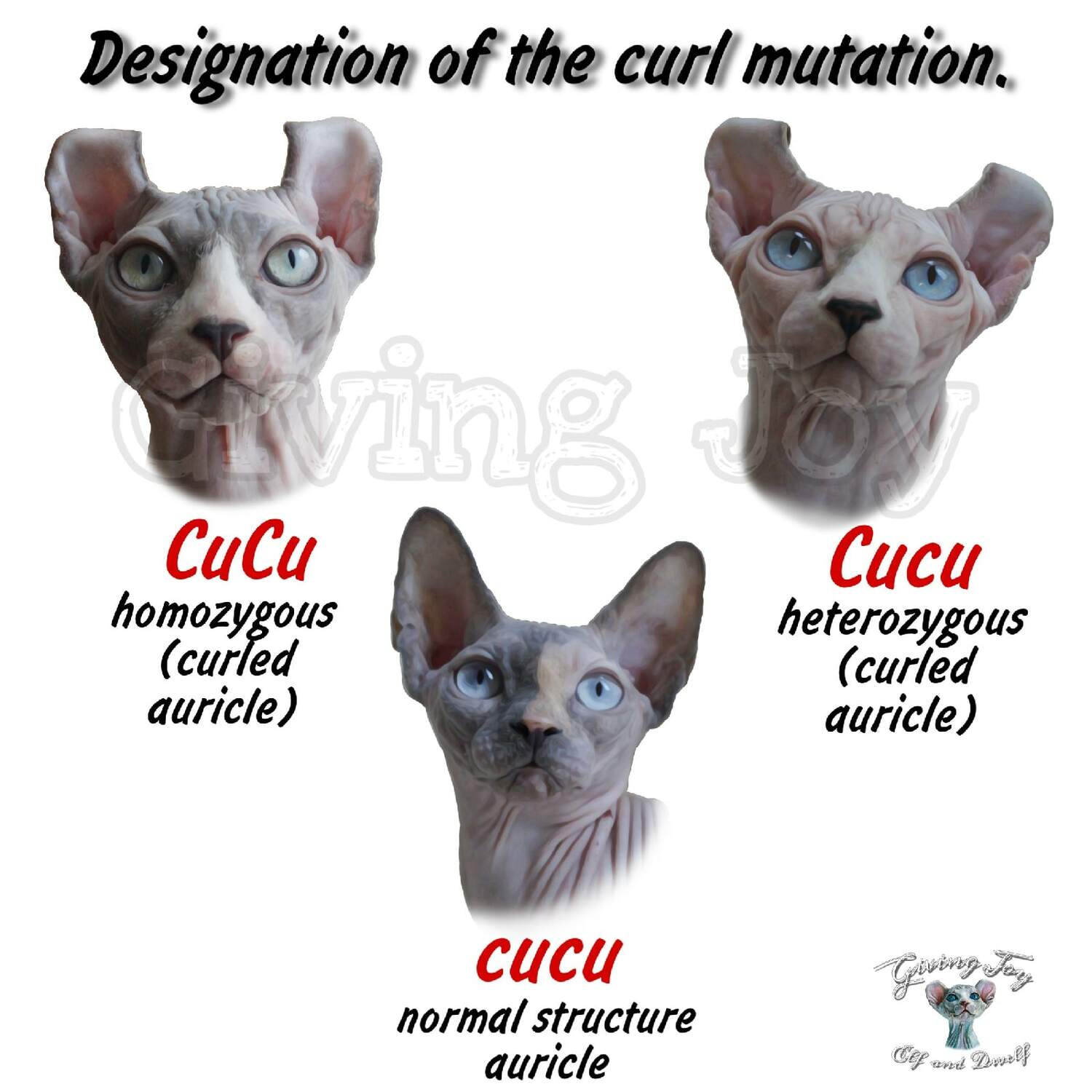
The elf's ear is an elegant smooth arc, turned back at least 90 degrees, maximum 180°. The optimal value of the curl is 135°. Unlike normal cat ears, which are soft and pliable, the cartilage contained in elf ears is hard, it retains its shape and is similar to a human ear. This cartilage should be present from the base of the ear and be 2/3 of the height while maintaining the flexibility of 1/3 of the ear. The smooth arc is visible both in profile and when viewed from the front. The edge of the ear should be smooth and smooth. The ear set is equally high and wide. The tips are rounded and flexible.
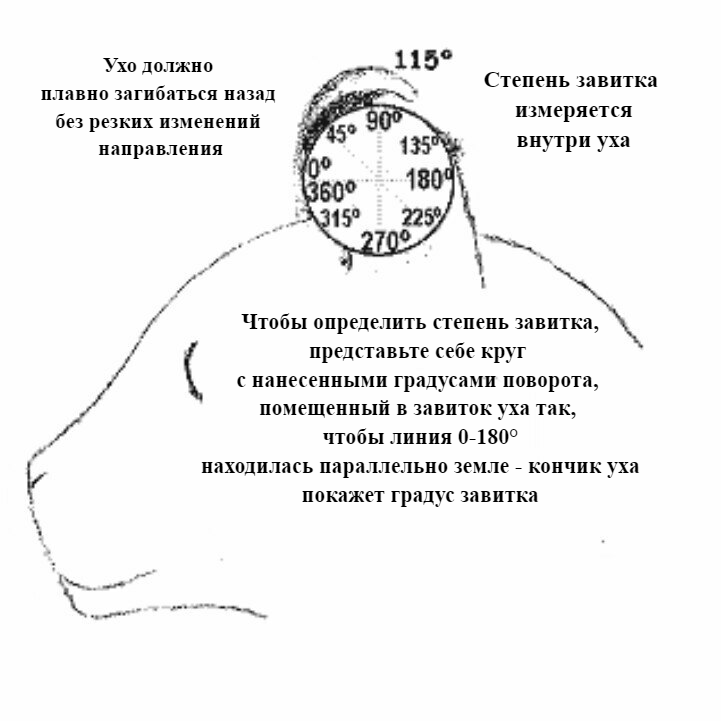
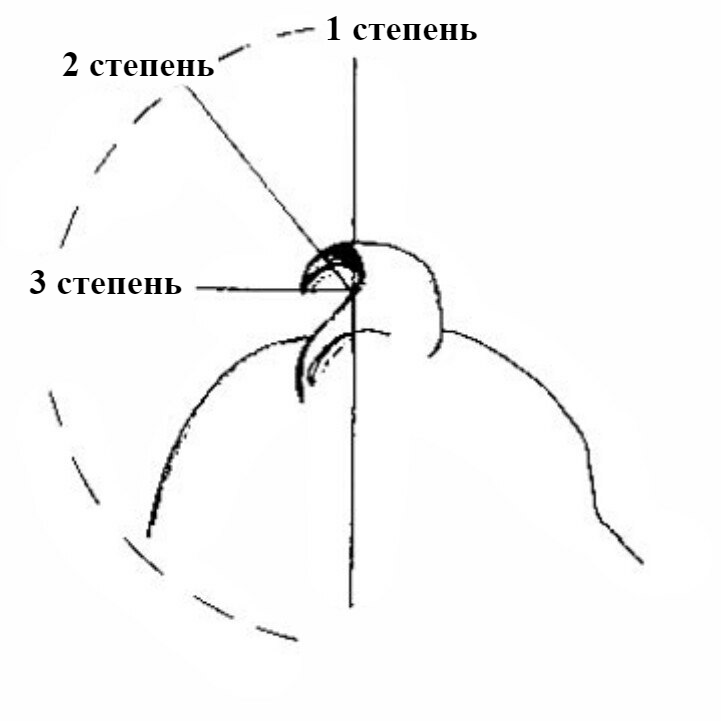
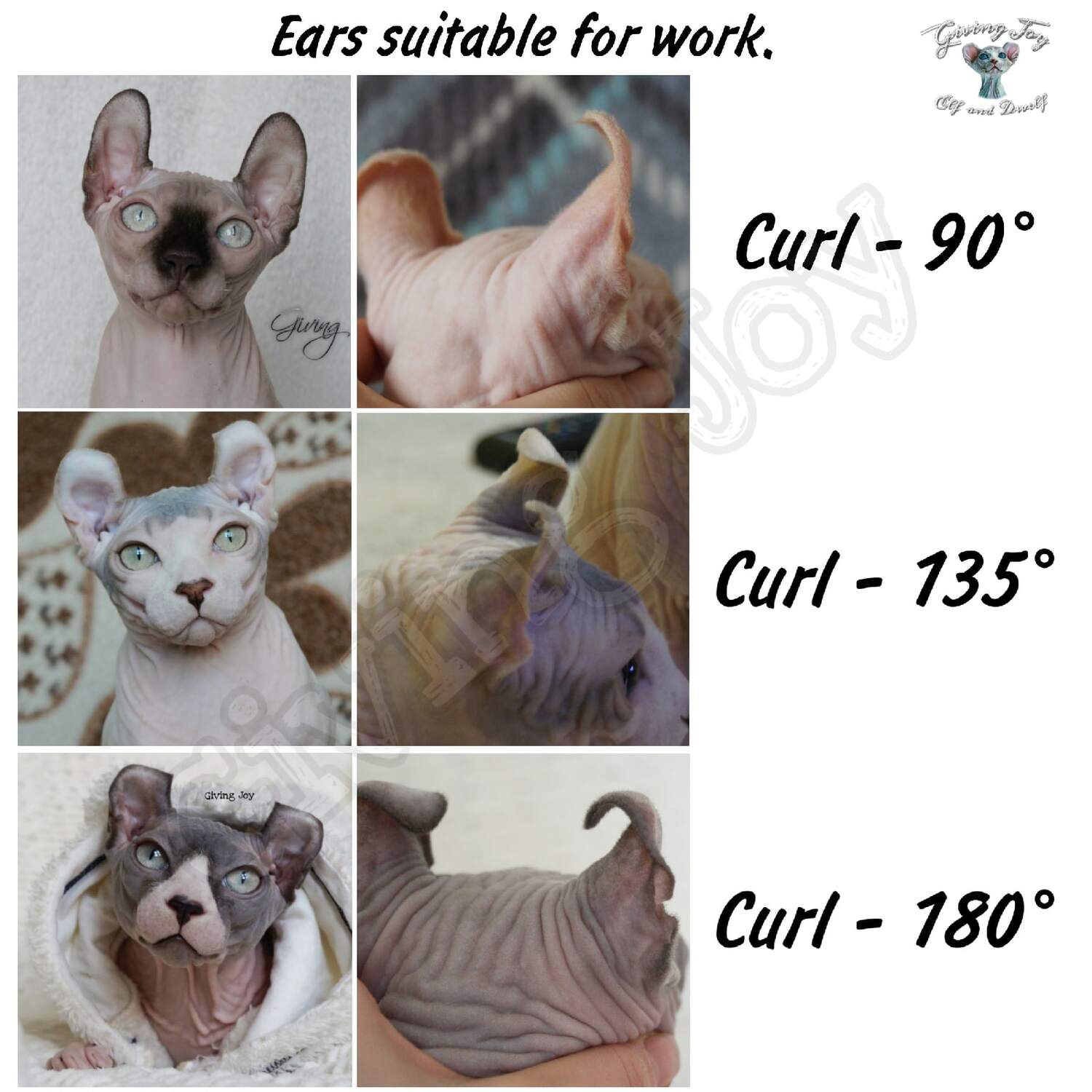
Breeding program for Elfes.
Elfes are homozygous and heterozygous.
A heterozygous Elf has the formula - Cucu.
Homozygous Elf - CuCu. There are few homozygous elfes, I have not met them in my practice yet. Many people wonder why kittens with straight ears are born when mating two elfes. In fact, this is a common occurrence when mating two heterozygous elfes. A homozygous elf can only be born from two elf parents and can only be tested by offspring. Kittens with straight ears will never be born from a homozygous elf, even when mating with a sphynx.
The first thing I want to pay attention to is that the degree of the curl of the parents does not affect the quality of the ear and the curl of the offspring. The main role in the quality of the ears of the offspring is played by the shape of the parents' ear.
Individuals should be selected for breeding:
- with a wide, even ear;
- the cartilage should be firm and have as few folds and deformations as possible;
- the curl should be smooth and flexible, without sharp breaks, from 90° to 180 °;
- the ears should be the same shape.
Elf 71 cats (straight ears) can take part in breeding. But you also need to choose the right ear. A wide, large ear with large pockets is not suitable for working with an Elf. The ear of the sphynx should be small, more erect, smooth, without pockets. Elf 71 do not have the Cu (curl auricle) gene, their formula is cucu (normal auricle). When mating two straight elfes, it is not possible to get kittens with a curl, all kittens will be straight-eared.
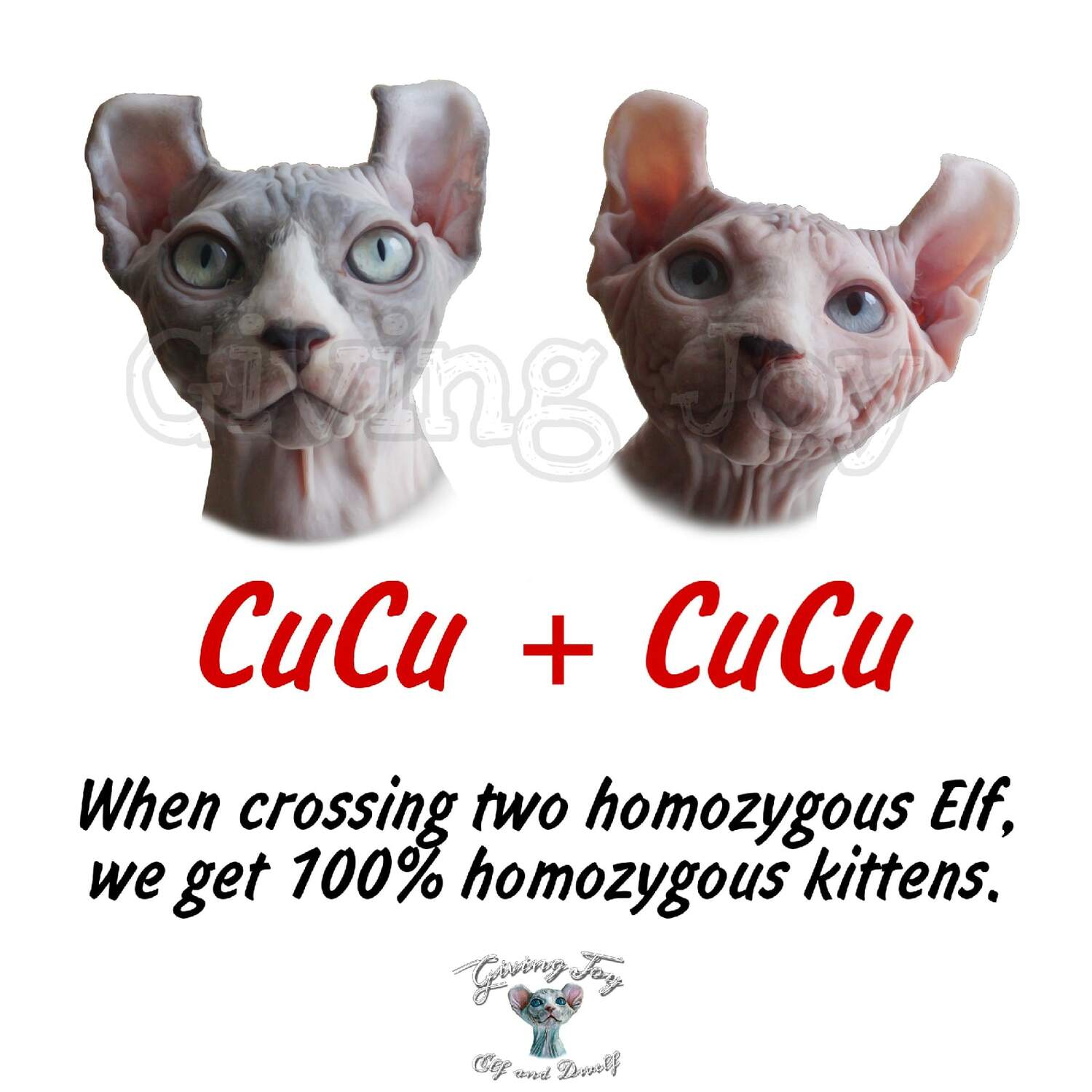
When mating two homozygous elfes (CuCu), we get all kittens with a curl (CuCu is homozygous).
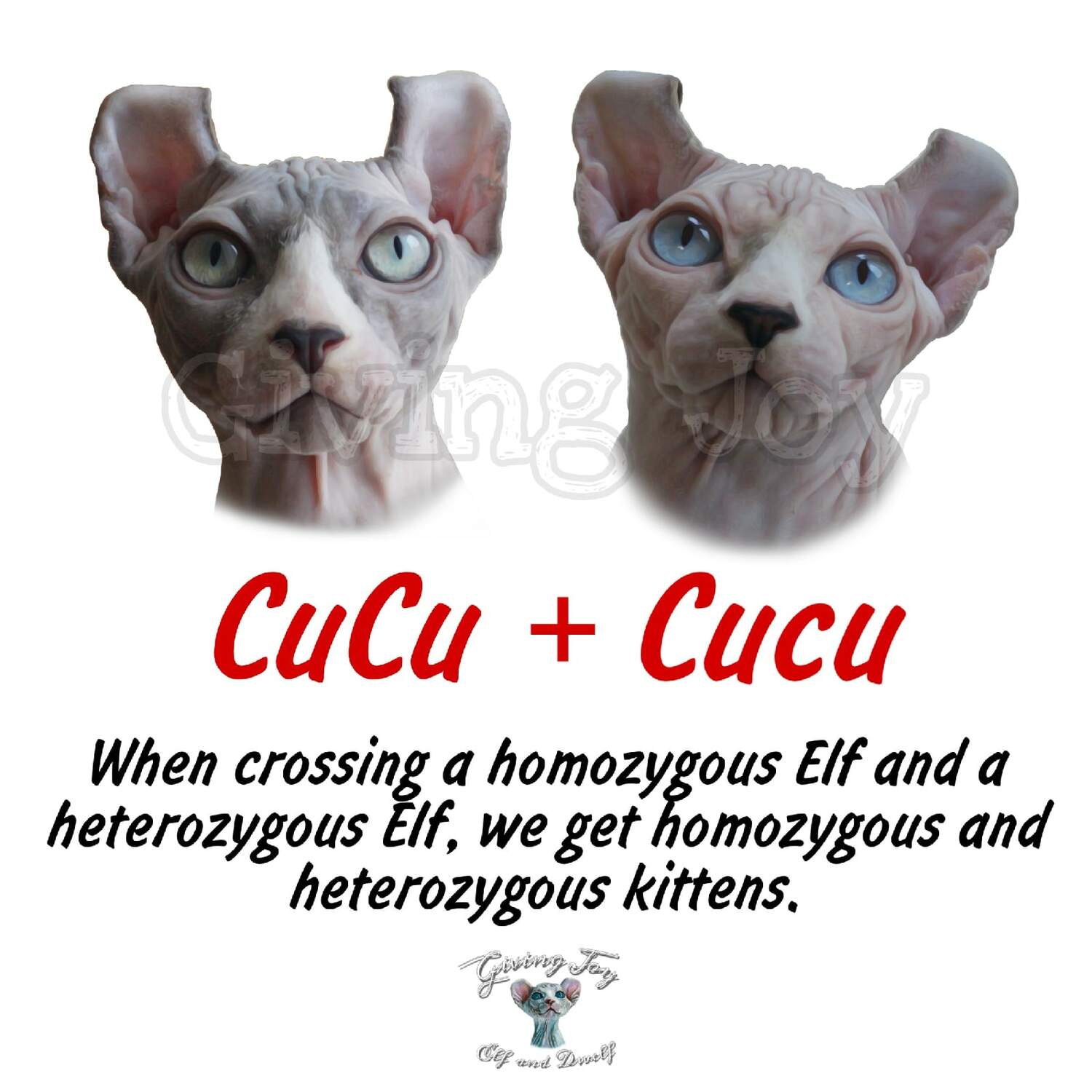
When mating a homozygous elf (CuCu) with a heterozygous elf (Cucu), we get all kittens with a curl (Cucu - heterozygote and CuCu - homozygote)
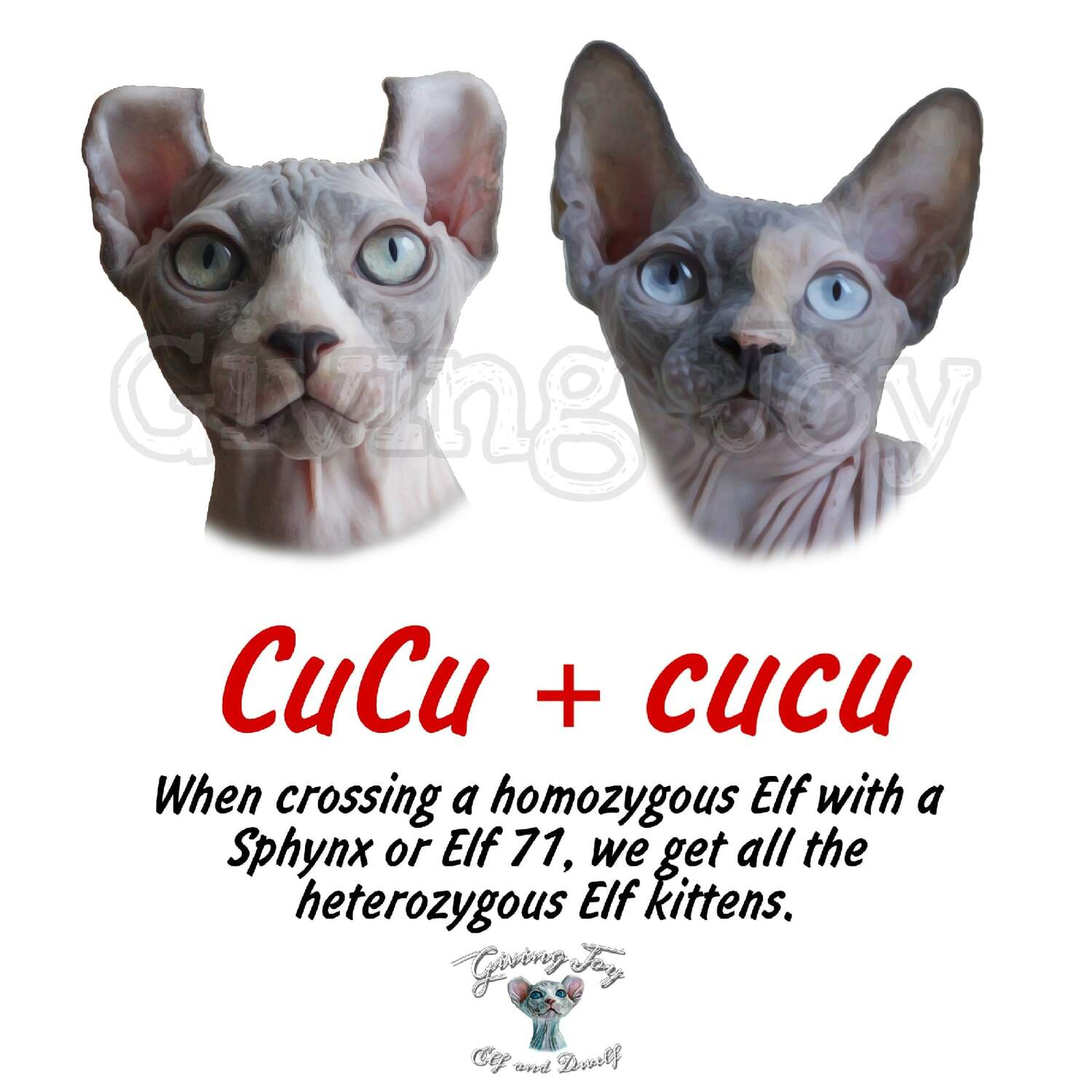
Since the gene that curl the ear is dominant, when mating a homozygous elf (CuCu) with straight-eared cats (cucu), all kittens will turn out with curls (Cucu - heterozygous).
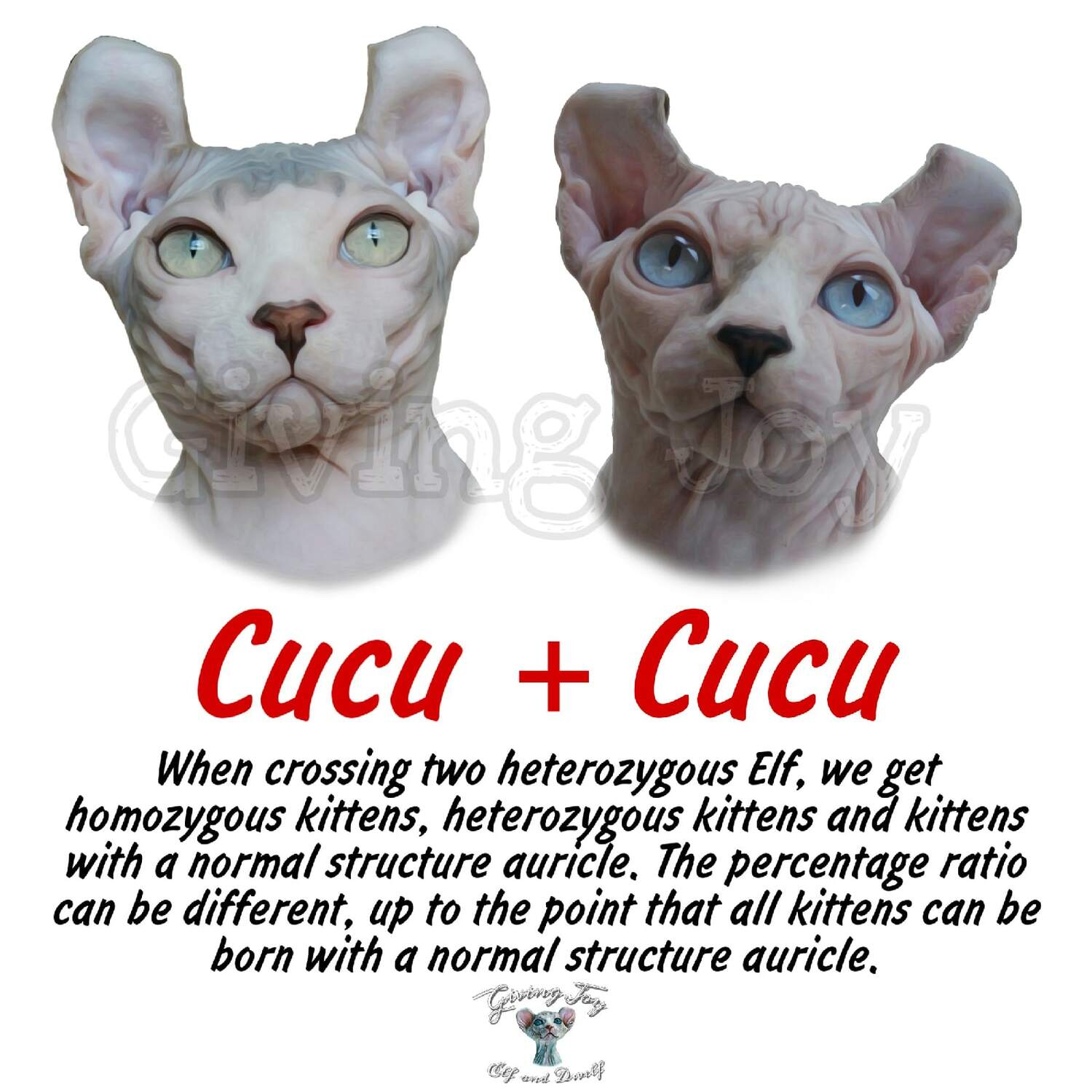
When mating two heterozygous elfes (Cucu), we get straight-eared kittens (cucu) and kittens with a curl (Cucu heterozygote and CuCu homozygote).
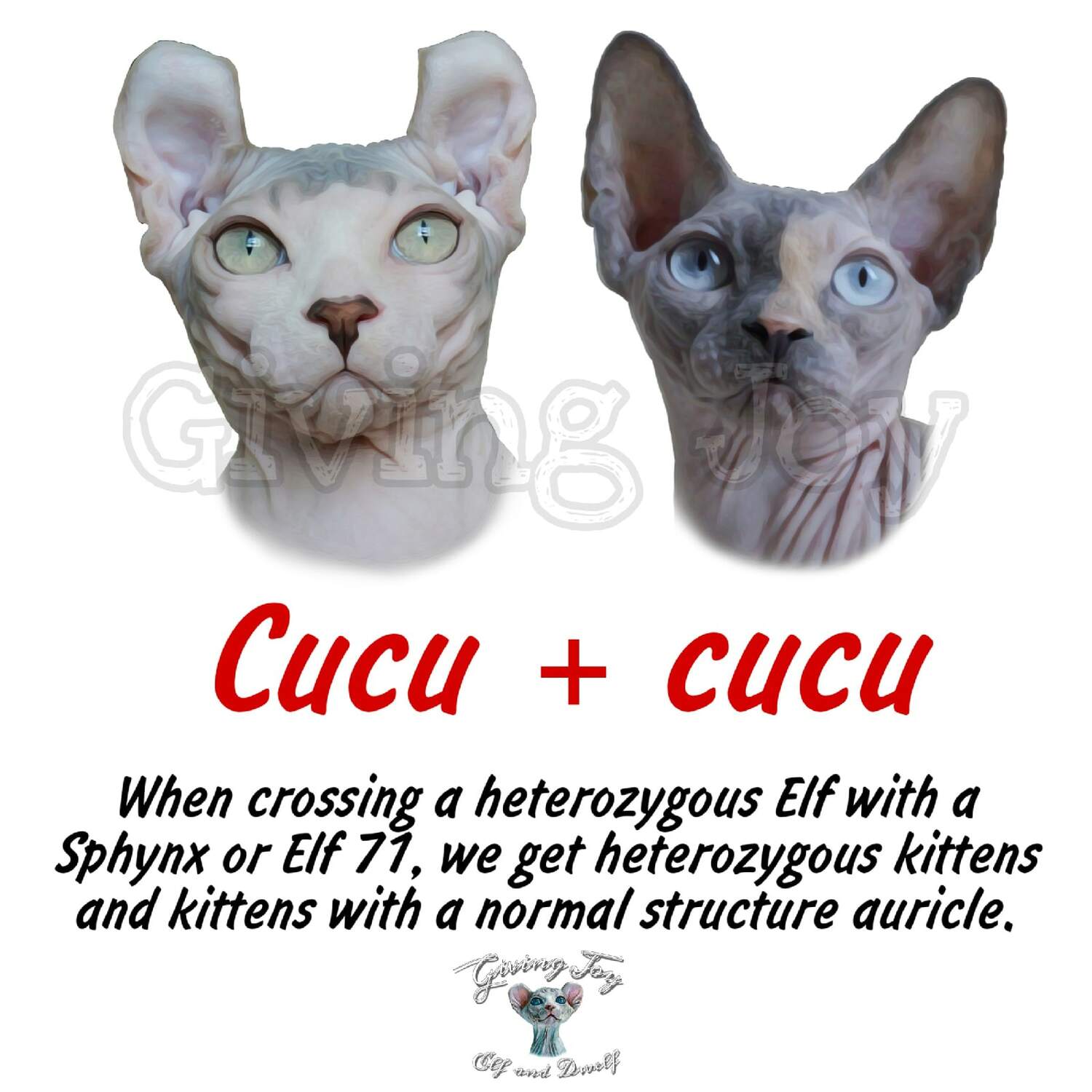
When mating a heterozygous elf (Cucu) with a Canadian sphynx or elf 71 (cucu), we get both straight-eared kittens (cucu) and with a curl ear (Cucu - heterozygote).
The main defects of the Elfes' ears are horizontal and vertical corrugation.
Vertical corrugation (VC) is described as: starting at the base of the ear and continuing along part or the entire length of the ear, a fold that bends the ear like a roll of paper vertically inward to the center line of the ear. At the same time, the outer edge of the ear covers the inner part of the ear, like a folded palm. The base of the ear is strongly narrowed. Vertical corrugation often leads to a change in the degree of the ear from 0 to 1, but a defective ear should not be confused with a normal one having a curl of 1 degree. Inheritance of this defect is polygenic.
Horizontal corrugation (HC) is defined as the excessive width of both sides of the base of the ear, protruding along a curved ridge (fold), giving the ear an inside-out look. A horizontal fold of cartilage is also visible in the center of the ear above the ear canal. At the same time, the base of the ear looks wider than normal, and the ear itself is turned out and, as it were, flattened on the head. Horizontal corrugation occurs on the ear with any degree of curl, on one or two ears. The degree of manifestation ranges from mild to pronounced. HC does not affect the degree and degree correspondence of the ear curls. Inheritance of this defect is simple recessive.
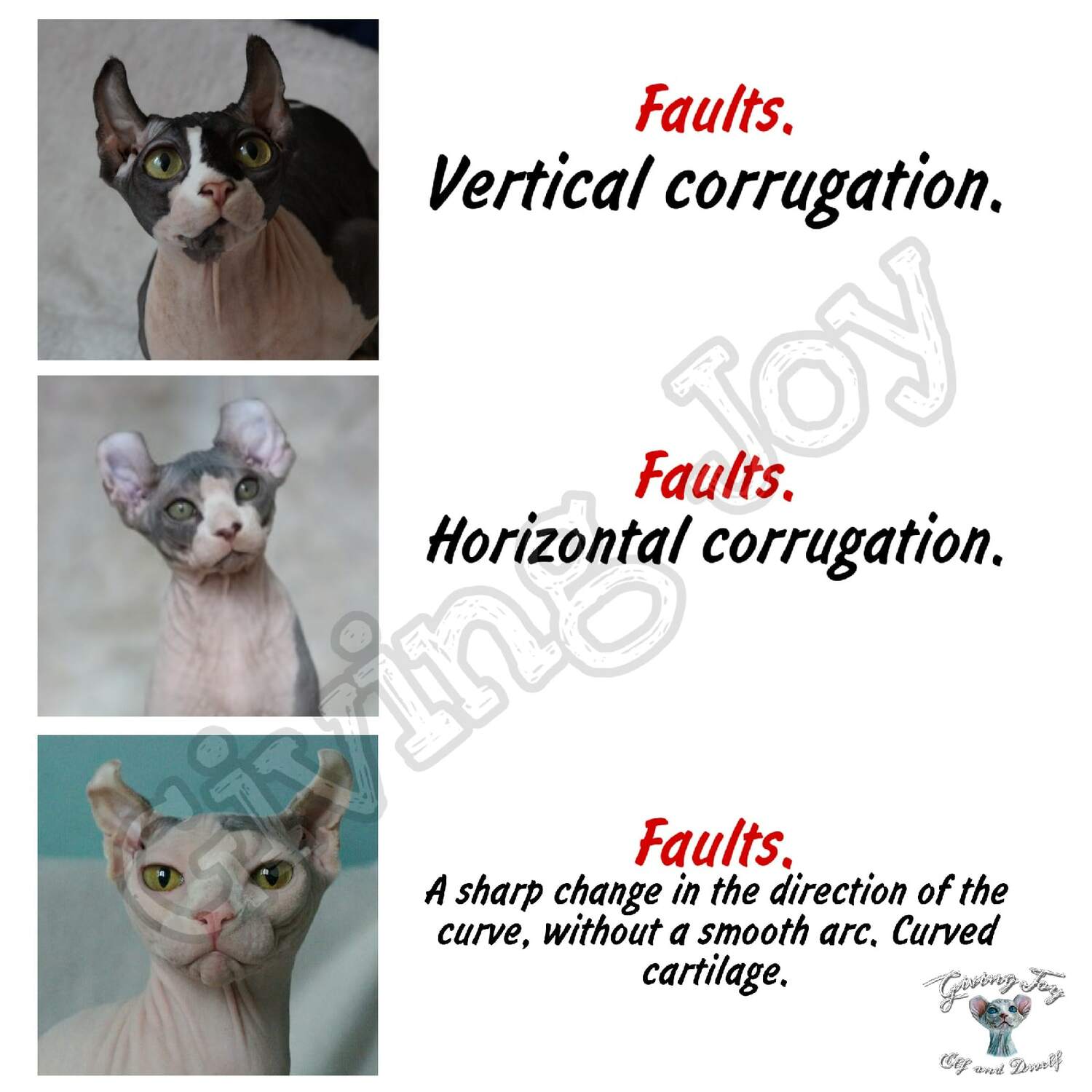
Both of these defects affect the surface of the ear and the base of the ear. At the same time, in the case of VC, the base becomes narrowed, and in the case of HC - expanded. Unfortunately, now I see a lot of breeding cats with vertical and horizontal corrugation in the work - this is a marriage, and it is almost impossible to get high-quality offspring from such cats. The photo shows the main disadvantages - vertical corrugation, horizontal corrugation and deformed cartilage with a sharp break at the bend.
All photos and text materials of the article belong to the Elven Dream cattery
and cannot be copied without approval.
The author is Larisa Rodina.

Cattery Elven Dream
WhatsApp / Telegram
+7 911 471 33 12


Kaliningrad
elven-dream@mail.ru
© 2023. Elf breed cattery - Elven Dream